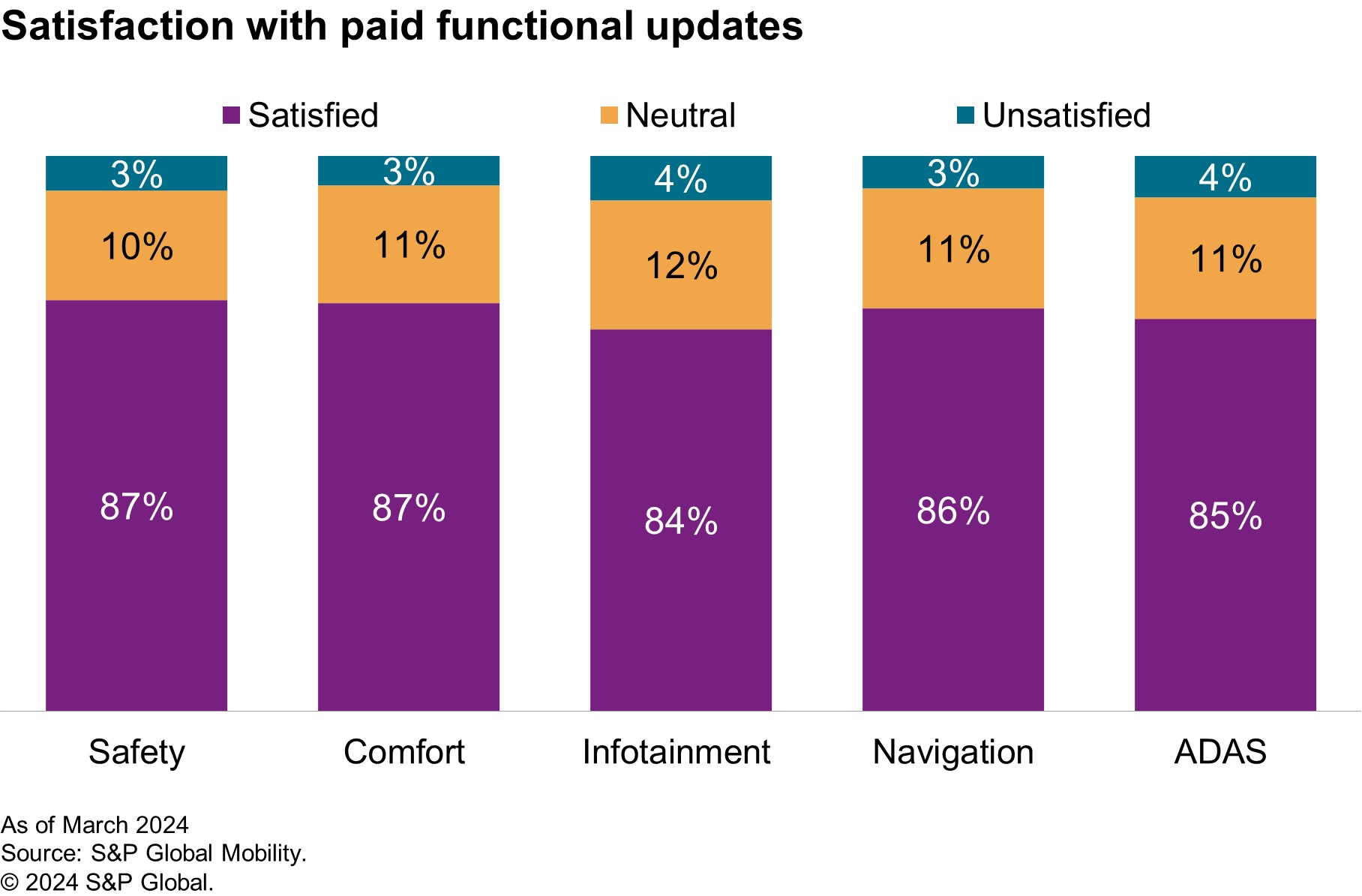The ability of original equipment manufacturers to extract
revenue from a vehicle once it has left the dealer's lot is the
holy grail for the motor industry. It's by no means a new quest,
either. The industry has long recognized the imbalance between the
revenue that accrues to OEMs at the point of sale and the financial
riches harvested during a vehicle's life. Jac Nasser, ex-president
and CEO of Ford, even made cradle-to-grave services a cornerstone
of Ford's strategy in the late 1990s. More recently, many OEMs
would rather be seen as mobility companies than plain old
automakers, a nod to the spectrum of services in which they see
growth opportunities for their brands.
The opportunities for OEMs are more diverse now than ever in the
car's 120-year-plus history. The “connected” component of the
connected, autonomous, sharing and electrification (CASE)
megatrend, and, more latterly, the software-defined vehicle (SDV)
— or the now increasingly modish AI-defined vehicle —
emphasize this ability to extract more dollars from consumers, be
it for subscription or one-off payment services. That's the theory,
in any case. The reality, as BMW discovered with its notorious
heated-seat experiment, can be different.
To better assess demand and consumers' willingness to pay for
connected car features, S&P Global Mobility conducts a global
survey of 8,000 vehicle owners annually. Here
are some insights from the survey:
Connected services brands and perceptions
Most respondents had a favorable opinion of their existing or
most recent connected services brand, and 83% would likely
recommend it to a friend. Positive opinions were higher for
regional/local automaker brands.
Compared with last year's survey, the top three connected
services brands per country remained almost the same across the
board. However, the US and Brazilian markets saw a change in
preferences. In the US, OnStar retained its top spot, but FordPass
and Honda Connect were new entrants to second and third. In Brazil,
Volkswagen We Connect, Toyota's T-Connect and Honda Connect were
all newcomers in the top three.
There was a slight decline in the likelihood of recommending
connected services brands: a warning to automakers. In this year's
survey, 43% of respondents were “very likely” to recommend their
chosen brand's services, compared with 47% in the prior year. The
countries where respondents were most likely to recommend connected
services were Brazil, with 94%, and mainland China and India, with
91%.
Satisfaction and willingness to pay
S&P Global Mobility's survey indicated declining
satisfaction levels across all connected services categories
compared with the previous year. The highest satisfaction was
reported for navigation, personalization and infotainment, while
the lowest was for safety and security. Paid functional updates
showed high satisfaction in safety, comfort, infotainment,
navigation and advanced driver-assistance systems (ADAS).
Willingness to pay was highest for safety and electric vehicle
services and lowest for navigation and infotainment.
Consumers expressed a strong desire for navigation and safety
and security services in their next vehicle, while productivity
services were the least desired. The desirability of EV services
and personalization are on the rise. For paid functional updates,
enhanced navigation, smartphone integration and basic ADAS
functionality were highly desirable. About 39% of respondents
preferred an annual subscription for these updates.

Data privacy concerns
As in the previous survey, data privacy remains a significant
concern, with 73% of respondents willing to share vehicle data in
exchange for free connected services. The main reported concerns
revolved around security, data misuse/trust and understanding the
value of data sharing.
Finally, even though trust in sharing information has increased
overall, respondents still feel more comfortable sharing it with
automakers than with technology companies.
The survey demonstrates that the search for incremental revenue
will be far from the walk in the park that some leading proponents
of the SDV paradigm suggest. As ever, consumer loyalty and trust
are hard-won. The industry is on the very first steps of that
journey with paid updates and subscriptions. Any false step now
could prove very costly for automakers as they work to diversify
their sources of revenue. The holy grail of paid updates and
subscription services could be another empty vessel from which the
industry drinks.
The survey included nearly 8,000 adult respondents from
eight territories, reflecting a diverse range of regional
specifics. The online survey was conducted in local languages, and
quotas were based on demographics such as gender, age, household
income and region. Key criteria for participation included owning a
vehicle from the model year 2019 or newer, ensuring the sample
targeted were potential end users of the technologies under
consideration.
Get daily insights and intelligence by subscribing to
AutoTechInsight.
Subscribe to the BriefCASE email newsletter.
Author: Vivek Beriwal, Senior Research Analyst II,
S&P Global Mobility





